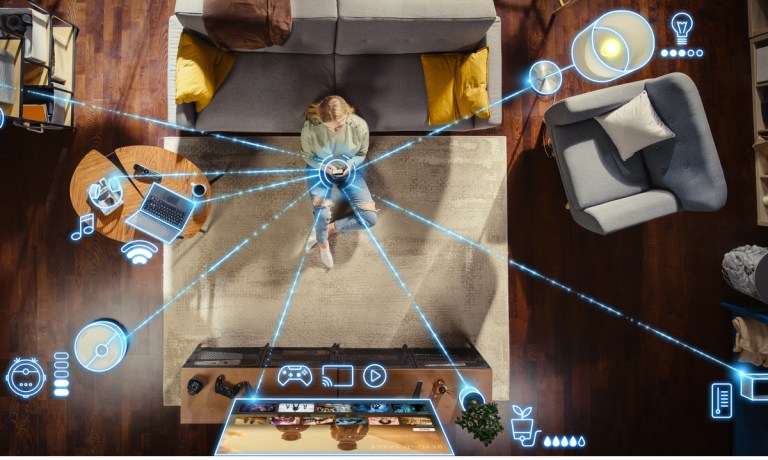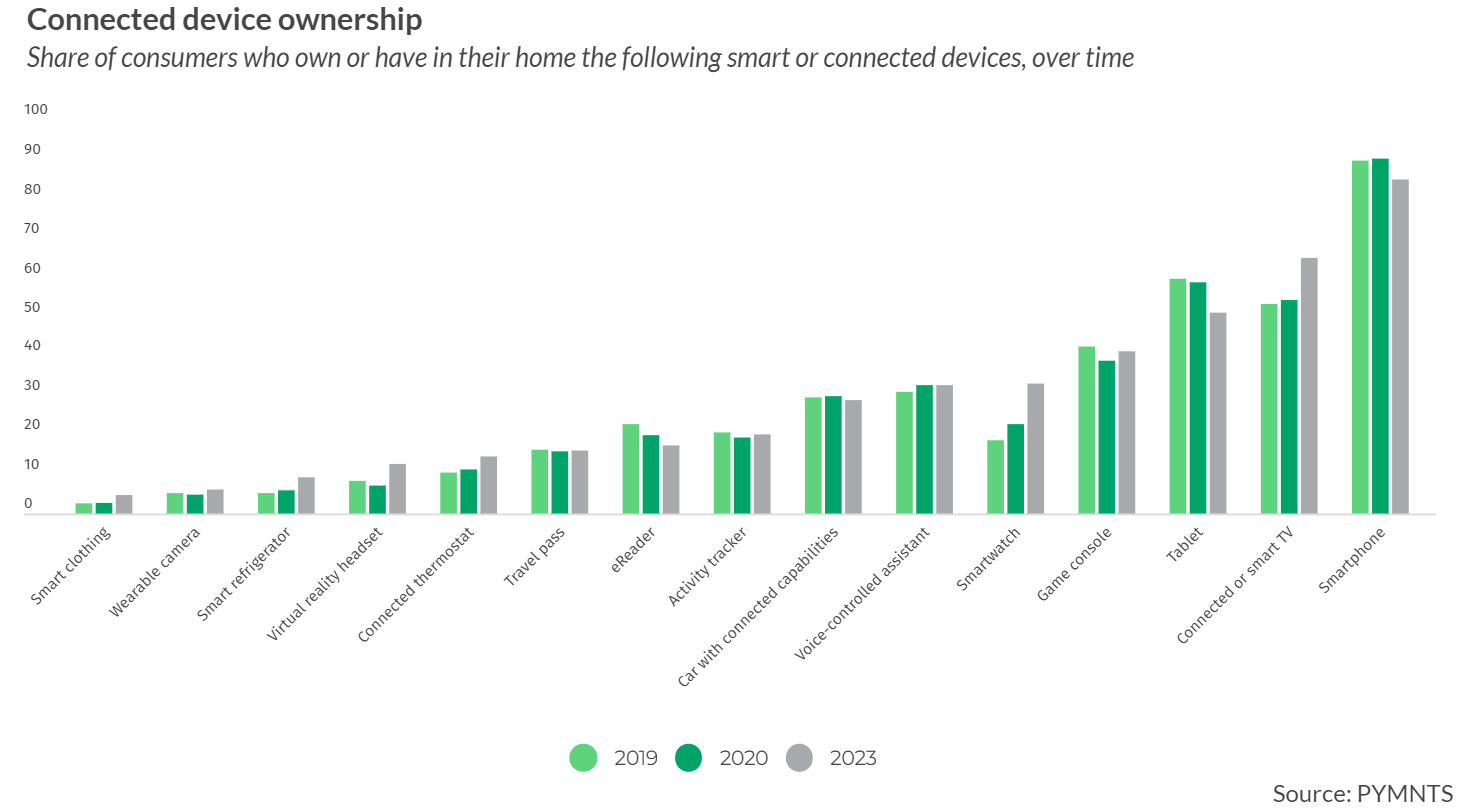
The adoption of connected devices, including smartphones, smart TVs and voice-controlled assistants, surged in 2023, indicating an increasing reliance on technology to streamline everyday activities.
From doing household chores and caring for others to shopping and eating, PYMNTS Intelligence draws insights from a survey of over 4,600 U.S. consumers to assess how digital-first consumers are using connected devices and apps to juggle multiple tasks both at work and at home.
The survey findings detailed in the “How Connected Devices Enable Multitasking Among Digital-First Consumers” edition of the “How We Will Pay” series, show that consumers now have access to a wide range of multitasking devices, making them more connected than ever before.
On average, consumers own six connected devices, with millennials and bridge millennials being the most connected, with an average of seven devices. The number of devices owned also increases with income, with high-income consumers owning seven devices compared to the four owned by the low-income group.
Smartphones remain the most prevalent connected device, with 85% of consumers owning one. Following closely are smart TVs, tablets, and game consoles, owned by 65%, 51%, and 42% of consumers, respectively. However, the ownership of smartwatches has seen a notable increase among millennials and bridge millennials, surpassing voice-controlled assistants to become the sixth most owned device. In 2023, 33% of the population owns a smartwatch, compared to 23% in 2020 and 19% in 2019.
The adoption of smart home devices has also witnessed a steady increase. The ownership of smart refrigerators has risen from 5% in 2019 to 9% in 2023, indicating a growing interest in connected appliances. Similarly, the ownership of connected thermostats has increased from 10% in 2019 to 15% in 2023. These devices offer convenience and efficiency, allowing consumers to control and monitor their homes remotely.
Beyond the home and work spaces, 2023 also saw connected cars gain significant traction, showcasing an era where vehicles seamlessly integrate with the digital world. These automobiles, equipped with internet connectivity and advanced sensors, offer an array of features from real-time navigation to entertainment systems, transforming the driving experience.
The rise of these connected devices has transformed consumers into multitaskers. According to the PYMNTS study, U.S. consumers spend about one-quarter of their time multitasking, using connected devices to perform tasks unrelated to their primary activities. This behavior is consistent across various activities, including eating and working. For instance, consumers spend 28% of their eating time multitasking with a connected device, and 24% of their work hours engaging in unrelated activities via a connected device.
Younger consumers, particularly Gen Z, are more inclined to multitask at work compared to older generations. Gen Z spends a significant amount of time multitasking, with 28% of their work time dedicated to unrelated activities. This group also shows a higher likelihood of using connected devices for leisure activities, such as listening to music and browsing social media.
Consumers’ interest in connected buying experiences further emphasizes their desire to multitask. PYMNTS’ research indicates that consumers are interested in various connected buying experiences, such as the ability to take photos of products and be automatically directed to the product page for purchase. They also show interest in virtual shopping technology that allows them to visualize how a purchase would look before making a decision.
In summary, 2023 marked a notable surge in consumer adoption of connected devices, with smartphones and smartwatches gaining in popularity. On average, consumers now possess six such devices, particularly concentrated among millennials and high-income individuals. This proliferation has redefined consumers as adept multitaskers, dedicating considerable time across varied activities on these devices.
Looking ahead, this trend hints at a future where integrated, multitasking-centric technology will continue shaping consumer behavior, with a growing focus on seamless, connected experiences in daily life.
